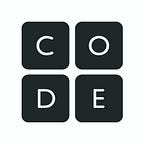Unraveling the Flappy Effect: From making games to coding at Stanford
Most people have heard of the butterfly effect, in which one flap of a butterfly’s wings could have much larger consequences elsewhere in the world. But could there be another, lesser-known phenomenon at play in the coding world: the Flappy effect?
Igor Barakaiev was 13 years old when Flappy Bird sparked an interest in app development. Now an undergraduate at Stanford University studying computer science, he’s launched Imaginara, a platform that creates customized children’s storybooks online.
We asked Igor how he got started and what he’s up to next — and learned it never hurts to be bold!
How did you get started coding?
IB: I can’t quite remember the exact timeline, but I remember being very interested in how mobile games are made and experimenting with trying to make a game myself. (I think I was particularly curious about Geometry Dash then, which I was playing myself.) This is when I thought it would be a good idea to reach out to Dong Nguyen, the creator of Flappy Bird, and ask him how to proceed, which is when he pointed me to Code.org. That was probably one of my earliest exposures to coding, though through visual blocks.
What about Flappy Bird appealed to you?
IB: Flappy Bird seemed like an amazing idea — it had extremely simple controls and yet it was so engaging. I was also optimistic enough to think that I would be able to learn how to make similar games in no time. (Spoiler: [It] took me much longer than I had thought.)
What lessons do you remember from the Code.org Flappy Bird activity?
IB: Building a clone of Flappy Bird on Code.org included programming logic like “What happens when you click?”, “What happens when you collide with an object?”, and “What happens when you fall to the ground?”. There was still a lot of “magic” behind the scenes, such as how are the graphics actually rendered and where are the assets coming from, but that wasn’t the point — the point was to learn how to think in terms of what a typical high-level programming language would look like. “While the game is running, whenever a user presses on the screen, the bird flies up and the sound is produced”; which is quite similar to what a real programming language looks like.
What were your next steps in coding and what brought you to the U.S.?
IB: Some time after trying out Code.org, I bought a book called C++ for Dummies where I got my first exposure to a “proper” programming language, although I didn’t really finish it and used it primarily for bragging rights among my classmates, because the code looked really sophisticated and difficult. I then joined a free programming school Sh++ (“Sh” stands for “Ш”, the first letter of the word “School” in Ukrainian), where I actually learned the basics of C++ and met really good friends with whom I then worked on multiple projects together. We worked on many random things such as building robots and controlling them via Bluetooth. One of the projects was a mobile game named Icy Bounce, inspired by Crossy Road, which we published on the App Store in 2017 and which we were lucky to see featured on the main page for about a week or so. This led to the game having over a quarter million downloads then.
At the same time, I had gotten into Ukraine Global Scholars, a non-profit helping Ukrainian high school students apply to schools abroad, and so I was applying to boarding high schools in the United States. In fact, my friend and I released Icy Bounce a bit after I first arrived in the United States.
Where did the idea for Imaginara come from?
IB: I had seen a post about making a custom children storybook on Twitter and thought it would be fun to automate this process. I mentioned the idea to David Eagleman, my Stanford professor, who thought he’d be interested to advise me on how to get this project off the ground. Several months later, I had a minimum viable version of the platform ready, which I announced on my Twitter profile.
How has the launch gone and what’s next for you?
IB: We have over a hundred sales so far. I am pretty happy with this result, but I think there’s certainly more potential, so I’m currently taking a step back to rethink the website and incorporate the feedback I received. I’m also working on a different product with David Eagleman along the way, which we will hopefully unveil soon.
Igor is currently an undergraduate student at Stanford University, majoring in Symbolic Systems with a concentration in neuroscience, as well as minoring in Mathematics. Igor, we can’t wait to see what’s next for you!
—Meghan Gannon, Code.org Marketing Manager
Code.org is a 501(c)3 nonprofit organization dedicated to every student having the opportunity to learn computer science as part of their core K-12 education. We are publicly funded by people like you. If you would like to join our commitment to computer science education by making a donation today, please click here. For questions, please contact Development at giving@code.org or (206) 593–5521. Thank you.
